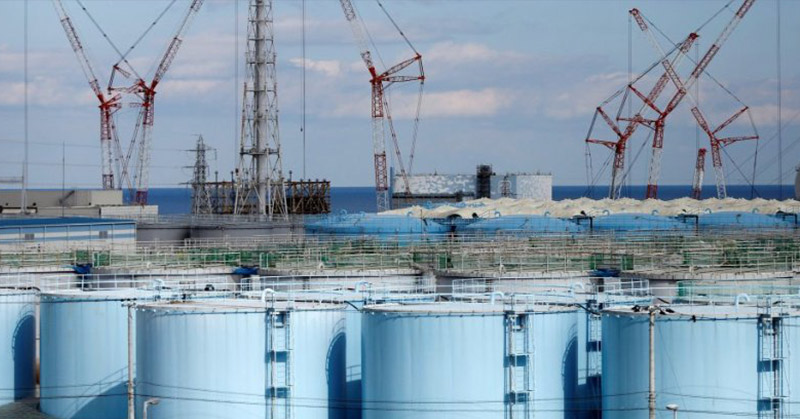It was March 11, 2011, that a magnitude 9 earthquake shook Fukushima, triggering tsunami waves 13 stories high. The epic natural disaster resulted in nuclear meltdowns and hydrogen explosions at Fukushima Daiichi Nuclear Power Plant, owned by Tokyo Electric Power Company (TEPCO).
But in the eight years that have passed since contaminated water has been collecting in temporary storage units. Up to 150 tons of contaminated groundwater is entering the reactor buildings in spite of sub drains and pumping wells. (Greenpeace)
But space is running out.
Yoshiaki Harada, Japan’s environmental minister, recently said that it is his opinion that, “the only option will be to drain it into the sea and dilute [the contaminated water].” (Business insider)
Harada, however, does not have the final say in the matter. TEPCO is standing by to hear the decision that the Japanese government will make after consulting a team of experts. (Reuters)
Harada’s comments have sparked vehement opposition, from environmental advocacy organizations like Greenpeace. Greenpeace said in a statement that the “only environmentally acceptable option” would be to continue to store the water and filter it for contaminants. (Business insider)
They’re joined by some of Japan’s neighbors, including Kim Ik-Jung, a member of Korea’s Nuclear Safety and Security Commission, who told The Korea Times “There is another option to deal with radioactive water. Japan can keep it in the tanks until the radiation level becomes low enough. But this takes time and money. It will take about 300 years until it is okay to discharge the water.” (Futurism)
So what are the contaminants plant workers have been collecting and storing? During the 2011 earthquake, cleanup workers used water to cool down nuclear reactor cores. At the same time, groundwater seeped up as a result of the tsunami and mixed with radioactive materials. The primary points of concern for this contaminated water are isotopes including strontium and tritium.
The filtering system known as ALPS (advanced liquid processing system) has been unsuccessful in completely decontaminating the polluted water, and so TEPCO has been keeping it in what was meant to be temporary storage facilities. According to some estimates, about 80% of the plant’s water still measures radiation levels too high to be dumped into the ocean, according to government regulations. (Asahi, Ministry of the Environment)
James Conca would agree with Japan’s minister, however. He’s been a scientist in the field of the earth and environmental sciences for 33 years, specializing in geologic disposal of nuclear waste, energy-related research, planetary surface processes, radiobiology and shielding for space colonies, subsurface transport and environmental clean-up of heavy metals.
He told Forbes magazine that dumping the water over a period of ten years is actually the safest thing to do. (Forbes)
“No harm has ever come to humans or the environment from tritium, no matter what the concentration or the dose. Putting this water into the ocean is, without doubt, the best way to get rid of it. Concentrating it and containerizing it actually causes more of a potential hazard to people and the environment. And is very very expensive with no benefit. ” (Forbes)
The issue of cost is what Greenpeace representatives feel is the main reason Japan’s environment minister feels they are running out of time. “They do not want to pay the full costs of storing and processing the contaminated water, including removal of radioactive tritium,” they told the Korea Times.
Since Harada’s statement, the former TEPCO chairman, Tsunehisa Katsumata and two former colleagues who had been accused of failing to take adequate precautions against a natural disaster such as the 2011 earthquake and tsunami, were acquitted.
“It would be impossible to operate a nuclear plant if operators are obliged to predict every possibility about a tsunami and take necessary measures,” said Judge Kenichi Nagafuchi, who delivered the verdict. (Washington Post)
Until Japan delivers an update on what actions TEPCO must take, officials and scientists will argue, and the giant storage units of contaminated water will continue to fill up.

